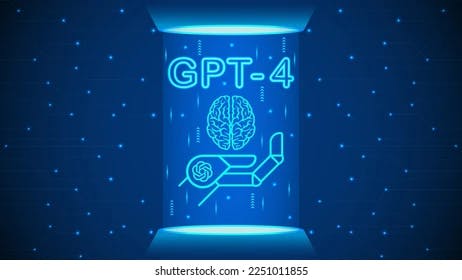
Introduction
Artificial Intelligence (AI) has made remarkable strides in recent years, revolutionizing various industries and transforming the way we interact with technology. One significant breakthrough in the field of natural language processing is the development of language models like GPT (Generative Pre-trained Transformer). In this blog post, we will explore the evolutionary journey of ChatGPT, starting from its predecessor GPT-3 to the promising future of GPT-4 and beyond.
GPT-3: The Giant Leap Forward
GPT-3, released by OpenAI in June 2020, marked a significant milestone in AI language models. With a staggering 175 billion parameters, it was the largest and most powerful language model at the time. GPT-3 demonstrated remarkable capabilities in generating human-like text and engaging in meaningful conversations. The core architecture of GPT-3, the Transformer, enabled it to process and generate text by understanding the context and relationships within the given input. It employed unsupervised learning on vast amounts of data, allowing it to grasp grammar, and context, and even generate coherent and contextually relevant responses.
The Impact of ChatGPT
OpenAI recognized the potential of GPT-3 beyond traditional natural language processing tasks and harnessed its capabilities to create ChatGPT—an AI language model designed specifically for interactive and dynamic conversations. ChatGPT facilitated engaging and realistic interactions by leveraging the contextual understanding provided by GPT-3.
As an advanced chatbot, ChatGPT showcased remarkable improvements in human-like responses, comprehension of prompts, and the ability to hold coherent conversations. It became a powerful tool for customer support, language learning, creative writing assistance, and various other applications where conversational AI was required.
Challenges and Limitations
Despite their impressive achievements, GPT-3 and ChatGPT had their limitations. One primary challenge was the occasional production of incorrect or nonsensical answers, which could be attributed to biases present in the training data or a lack of real-time fact-checking capabilities. GPT-3 also struggled with providing accurate and specific responses when faced with ambiguous or contextually complex queries.OpenAI continually sought to address these limitations and improve upon the existing architecture in subsequent iterations.
The Future: GPT-4 and Beyond
OpenAI's commitment to advancement and innovation in AI language models has paved the way for the future evolution of ChatGPT. While specific details about GPT-4 are not available at the time of writing, we can anticipate exciting enhancements and breakthroughs based on the trajectory of the technology.
Improved Contextual Understanding: GPT-4 is expected to exhibit a greater understanding of context, allowing for more accurate and contextually relevant responses. OpenAI will likely focus on training the model with more diverse and representative datasets to reduce biases and improve its knowledge base.
Fact-Checking and Accuracy: To address the issue of incorrect or nonsensical responses, GPT-4 may incorporate real-time fact-checking mechanisms. This improvement would enhance the reliability and accuracy of the information provided by the model, making it a more trustworthy conversational partner.
Ethical Considerations: OpenAI has been proactive in acknowledging the ethical implications of AI technology. With GPT-4, we can expect an increased emphasis on reducing biases, ensuring transparency, and implementing safety measures to mitigate any potential misuse of the model.
Broader Applicability: GPT-4 is anticipated to expand the range of applications for ChatGPT. OpenAI aims to develop more specialized versions tailored to specific industries, such as healthcare, education, and finance, enabling organizations to leverage AI-driven conversational agents for enhanced productivity and user experiences.
Conclusion
The evolution of ChatGPT from GPT-3 to GPT-4 represents a remarkable journey in the development of AI language models. These models have revolutionized the way we interact with technology, bringing us closer to a future where machines can seamlessly understand and engage in natural conversations. OpenAI's relentless pursuit of innovation promises exciting improvements in context comprehension, fact-checking, and ethical considerations, ushering in a new era of AI-powered conversational agents that will reshape various industries and enhance our everyday lives.